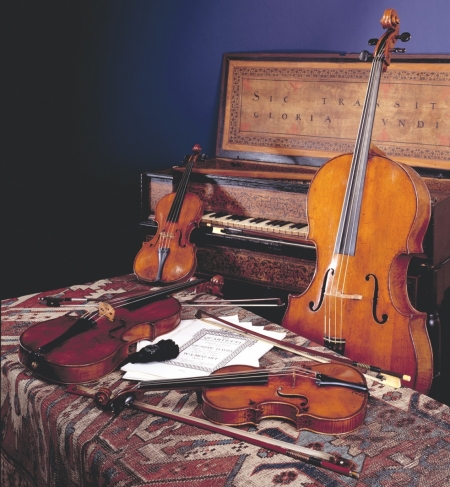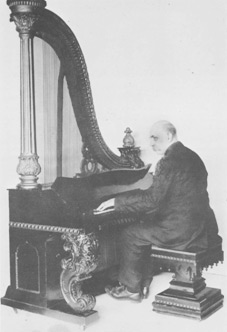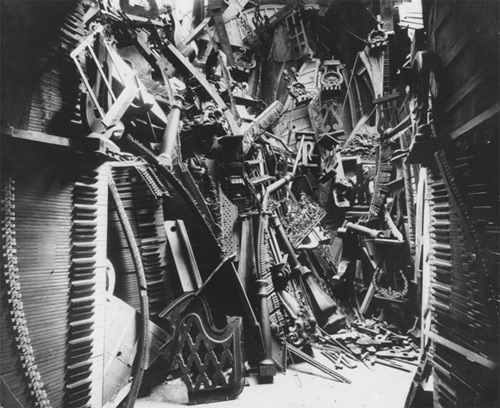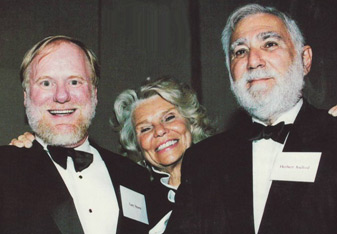- Home
- About
- About SCMS
- Directors
- Artists
- Vera Beths
- Steven Dann
- Marc Destrubé
- James Dunham
- Mark Fewer
- Eric Hoeprich
- Christopher Krueger
- Myron Lutzke
- Marilyn McDonald
- Douglas McNabney
- Mitzi Meyerson
- Pedja Muzijevic
- Anca Nicolau
- Jacques Ogg
- Loretta O'Sullivan
- Lambert Orkis
- Paolo Pandolfo
- William Purvis
- Marc Schachman
- Jaap Schröder
- Andrew Schwartz
- William Sharp
- Ian Swensen
- Lucy van Dael
- Ensembles
- Concerts
- The Collection
- Recordings
- Education
- Donate

A quartet of instruments (1656-77) by Nicoló Amati (donated by Herbert and Evelyn Axelrod), and the 1620 Ruckers virginal (donated by Hugo Worch)
The Smithsonian’s collections contain nearly eight thousand musical instruments. Sixty-five per cent of these, representing the Western classical music tradition and the popular music that grew out of it, are held by the National Museum of American History, home to the Smithsonian Chamber Music Society. The remainder of this vast assemblage—one of the largest in the world— is distributed among the ethnographic collections of the National Museum of Natural History, the National Museum of the American Indian, and the National Museum of African Art.
The Smithsonian’s collection of musical instruments was officially recognized in 1879 when Dr. G. Brown Goode, one of the Institution’s Assistant Secretaries, systematically reorganized all the Smithsonian’s holdings. He himself donated many European instruments he had collected, adding to instruments which had come from the Philadelphia Centennial Exposition of 1876; native American instruments collected on the Wilkes expedition (1838-1842) and later; various individual gifts; and large assembly of wind instruments, banjos, and music boxes donated by the New York music dealer J. Howard Foote. In 1914, the Washington piano dealer Hugo Worch contributed the first of what

Hugo Worch plays a 19th-century harp piano from his collection
would eventually amount to a collection of about two hundred keyboard instruments and a large repository of photographs dealing with the history of the construction of keyboard instruments. Worch held the title of Honorary Custodian of Musical Instruments from about 1921 until his death in 1938.

A glimpse into Hugo Worch’s “parts room”
With the opening of the National Museum of History and Technology (which was renamed the National Museum of American History in 1980) in January 1964, the musical instrument collection, which had been languishing in storage, was given a real home in the new museum. (The curatorial and collections management staff of the Division of Musical Instruments and its successors included John Shortridge, Cyntha Adams Hoover, and Scott Odell, who were at work even before the Museum opened its doors to the public; Howard Mayer Brown, Robert Sheldon, Helen Hollis, John T. Fesperman, and James Weaver who all arrived in the mid-1960s; Gary Sturm and Kenneth Slowik, whose association with the collection began around the time of the foundation of the Smithsonian Chamber Music Society; and, more recently, Stacey Kluck, Elizabeth McCullough, and Gina Whiteman.)
With a long-term loan of over one dozen Cremonese stringed instruments placed at the Smithsonian by an anonymous patron in the late 1970s, a new collection strength was developed. In 1979, the Museum acquired a quartet of Italian stringed instruments in their original, unaltered condition from Lawrence Witten. Charlotte Bergen donated her magnificent 1701 Stradivari cello (the Servais) to the Museum in 1981. By the mid-1980s, Herbert and Evelyn Axelrod became involved with the collection, at first loaning, then eventually donating, an astonishing range of instruments and bows, including complete string quartets of instruments by the Cremonese masters Antonio Stradivari and Nicoló Amati, the great 19th-century Parisian luthier Jean-Baptiste Vuillaume, and the Italian-born, New Jersey-based maker Sergio Peresson, plus an important violin by Jacobus Stainer. The Axelrods also assisted with the acquisition of two important 19th-century pianos (by Conrad Graf and Erard), and established generous endowments for the care of their instruments and their continued use in performance and recordings.

Gary Sturm, Evelyn Axelrod, and Dr. Herbert R. Axelrod
at a Smithsonian event acknowledging the Axelrod’s largesse
Other notable string-related acquisitions include a historically unparalleled collection of 150 cello bows donated by Janos Scholz (1993), the contents of the Washington, D.C. violin shop of luthier Albert Moglié (1987), and the extensive library and photo archives of New York violin dealer Jacques Français (2004). The archives of harpsichord maker William R. Dowd are also part of the network of collection-oriented materials available for study.
We will continue to add information on particularly interesting instruments to the Great Instruments with Great Stories pages.


